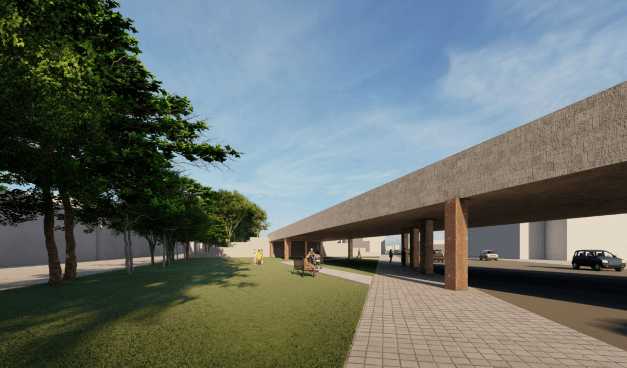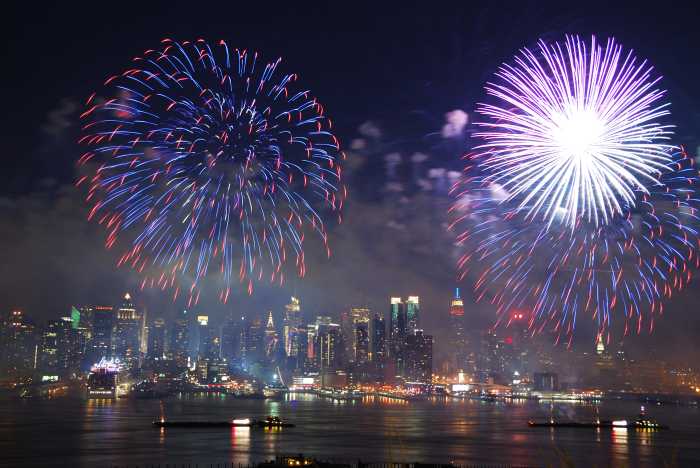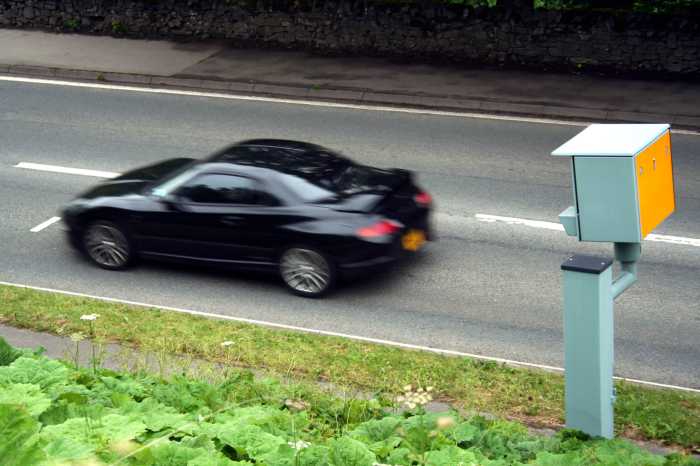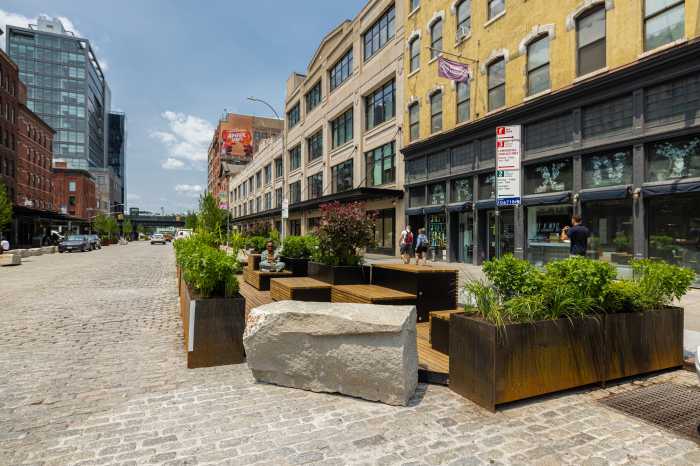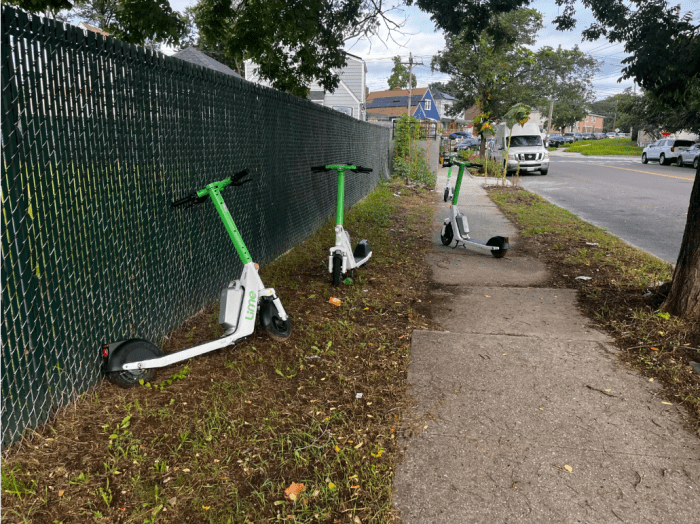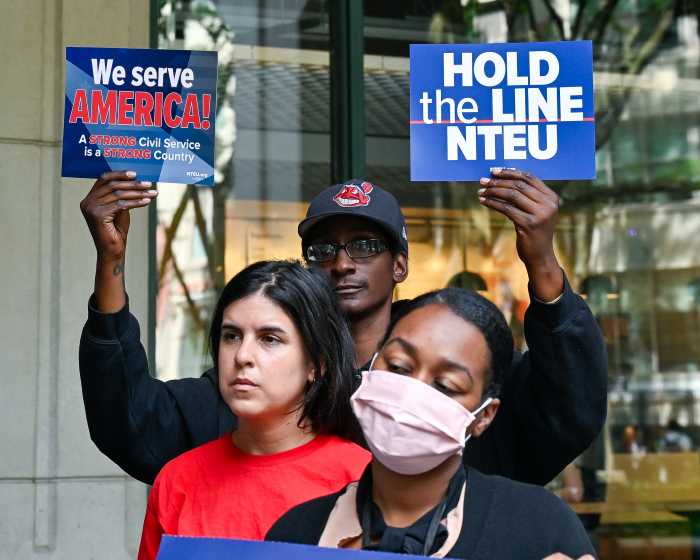Queens pols and advocates are still calling for new transit service on a long-disused rail line that they say would shorten residents’ punishingly long commutes, but have to contend with the Adams Administration’s desire to build a park instead.
The Rockaway Beach Branch once provided Long Island Rail Road service between Rego Park and the Rockaway Peninsula in Queens. The southern half is still used by the A train between Ozone Park and Rockaway, but the northern bit has sat abandoned since 1962, with the rail infrastructure deteriorating and the right-of-way becoming overgrown with vegetation.
For years, local pols and advocates have been calling for its reactivation as a subway line, specifically extending the M train down from Rego Park all the way to Rockaway, providing an additional transit option for peninsula commuters and enabling a wealth of new transfers. An estimated 47,000 New Yorkers would use the line daily.
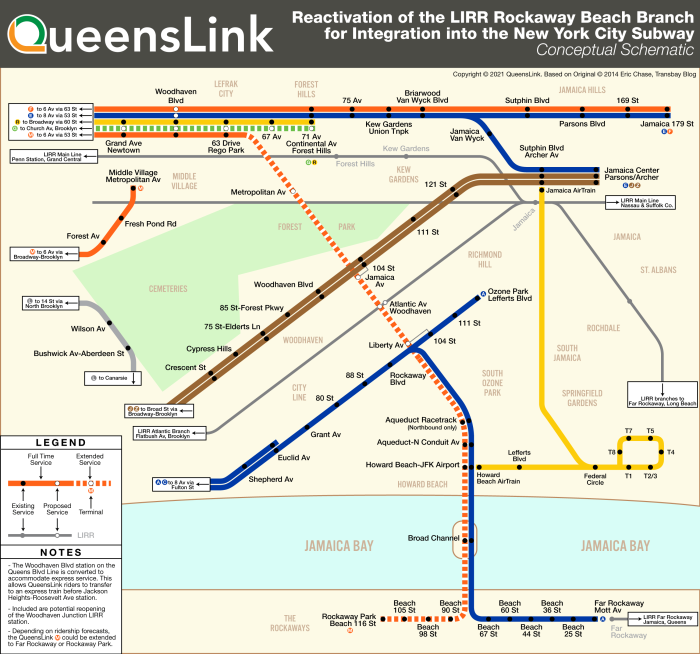
The proposal, called the QueensLink, has the support of virtually every political figure in southeast Queens, many of whom descended on City Hall on Wednesday to renew their call for the state, city, and MTA to study reactivating the line. The coalition of supporters stretches the partisan divide, from democratic socialist Assemblymember Zohran Mamdani to conservative Republican Councilmember Joann Ariola.
“We have a chance to bring modern rail to our district to serve the people of Queens. What more could you ask for than a modern right of way, and we have it,” said Central Queens Councilmember Bob Holden at the rally. “It’s there for the taking…you have the canvas now, an empty blank canvas with rail there already.”
While the project has been suspended in amber for years, supporters say now is the time to do it: the federal infrastructure bill has unlocked many billions of dollars for states and localities to get shovels in the ground, and the MTA is already neck-deep in another project to repurpose the LIRR’s underutilized Bay Ridge Branch, which the state hopes to turn into the Interborough Express between Brooklyn and Queens.
“It connects residents in transit deserts such as South Queens, and in so doing will serve at least 47,000 daily riders,” said Rick Horan, executive director of QueensLink, at the rally. “As such, QueensLink represents a once-in-a-lifetime opportunity to reconnect the borough by using this strategic corridor for both transit and parks.”
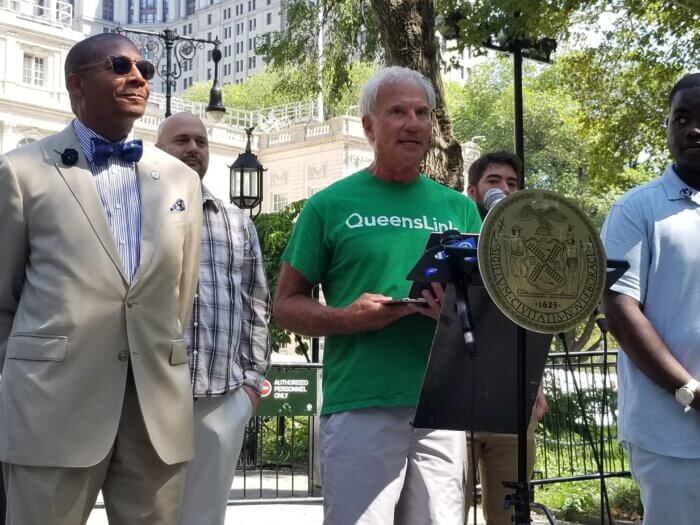
But the push has been complicated by the Adams Administration, which supports a rival project along the stretch called the QueensWay. That project would convert the abandoned rail line into a linear park, a la Manhattan’s High Line, and provide what some residents say is desperately needed green space in the area.
Mayor Eric Adams last year provided $35 million in city money to design and build the first phase of the QueensWay, called the “Metropolitan Hub,” that would transform the segment between Metropolitan Avenue and Union Turnpike into a park.
QueensWay has support from advocacy groups like the New York League of Conservation Voters and Transportation Alternatives, and also has money from the state, city, and a nonprofit funded by Citi Bank. Supporters say it would improve pedestrian access, be a boon for the environment, and provide green space where it’s lacking, especially in Richmond Hill, and they say it’s shovel-ready.
“Friends of the QueensWay is very excited about the progress on the QueensWay project and looks forward to working with the City of NY to realize the extraordinary near-term opportunity to activate quality open space, as well as environmental, economic and educational benefits for Central Queens, starting with the first phase called the MetHub,” said Karen Imas, a member of Friends of the QueensWay’s steering committee.
The big difference between the projects, according to QueensLinkers, is that the QueensLink supports both expanded transit and parkland, while the QueensWay precludes transit development.
“Sometimes in politics, you do have to choose one or the other. How often do you have a chance where everyone says you can actually do both,” said Public Advocate Jumaane Williams. “If anyone is talking about only building one, it’s not the QueensLink folks. We are the ones saying let us do both of them.”
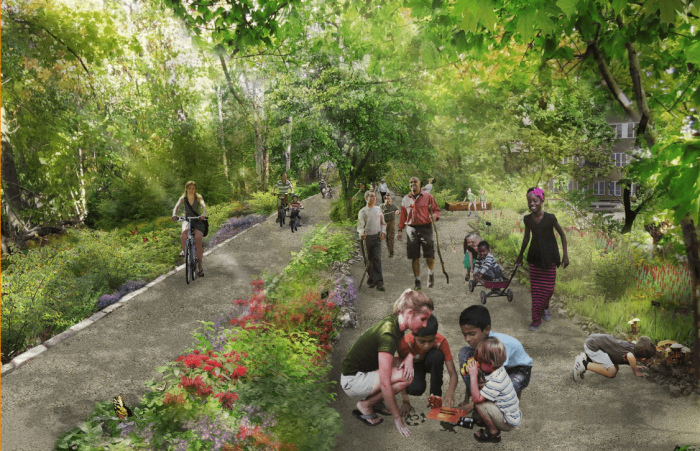
Moreover, Rockaway residents say the QueensLink would open up freedom of movement within their home borough in a way that is effectively impossible today, when they have to go through Brooklyn and Manhattan to reach the rest of Queens on the subway.
“If I want to go to Queens Borough Hall, I have to go through Manhattan to go all the way over,” said Jeanne DuPont, executive director of the Rockaway Initiative for Sustainability and Equity (RISE). “It’s not fair to the people who live in the borough of Queens to be cutting them off from the resources that we have.”
The MTA studied reactivating the Rockaway Beach Branch for the QueensLink back in 2019, and estimated it would cost $8.1 billion. QueensLink’s own estimate for the project tallies to $3.5 billion, arguing the authority factored in billions of dollars in “soft costs.”
“If this state has $1 billion to widen the Van Wyck, this state can find $3.5 billion to put New Yorkers on a train,” said Mamdani.
An MTA spokesperson said the agency is considering including Rockaway Beach Branch reactivation in its upcoming 20-year needs assessment for capital investment, which is set to be unveiled next month.
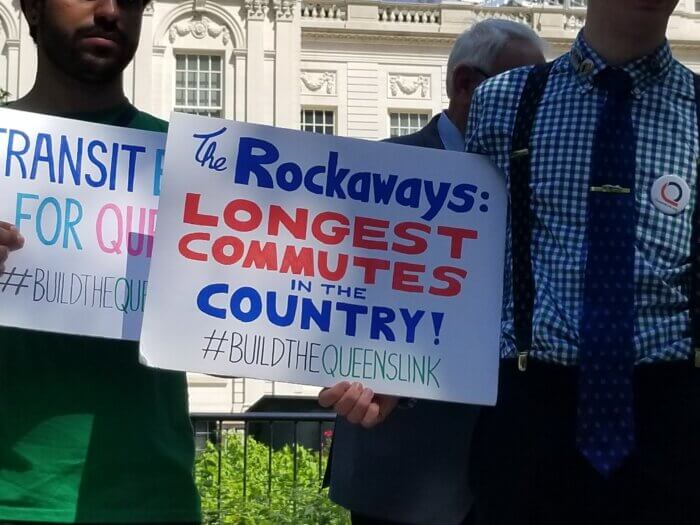
“Reactivation of the LIRR’s Rockaway Beach Branch is one of more than 20 concepts being analyzed by the MTA as part of its comparative evaluation of potential expansion projects being undertaken as part of the Authority’s 20-Year Needs Assessment, a document that helps inform the forthcoming Capital Program and will be presented next month,” said MTA spokesperson Aaron Donovan.
Other items expected to make it into the 20-year needs assessment are further expansions of the Second Avenue Subway and the Interborough Express, while pie-in-the-sky proposals that could sneak in include extending the subway down Utica Avenue in Brooklyn and recommissioning the LIRR’s defunct Lower Montauk Branch between Jamaica and Long Island City.
A spokesperson for Mayor Adams disputed the notion that getting the ball rolling on the QueensWay now would preclude developing transit later. The administration intends to complete an environmental review for the project by next year.
“Mayor Adams last fall announced a $35 million in new open space for Queens residents, and the administration is moving that work forward with community engagement underway and a design consultant on board,” said the City Hall spokesperson. “As we’ve always said, the proposed Met Hub does not preclude an MTA project if they determine one is feasible, and we are ready to partner with them if they decide to move forward.”
But QueensLink supporters aren’t buying it. For one, redevelopment of the High Line into a park has effectively made it impossible to ever restore transit service on the corridor, not that anyone is trying to either.
“It’s like putting in the landscaping and then building your house,” said Horan. “What we’re asking for is a chance to study it. This is a very valuable piece of property, why would you just rush to build on it at the expense of something much more valuable.”
Read more: Lawmakers Push to Ban Polluting Cruise Ships at NYC Ports



